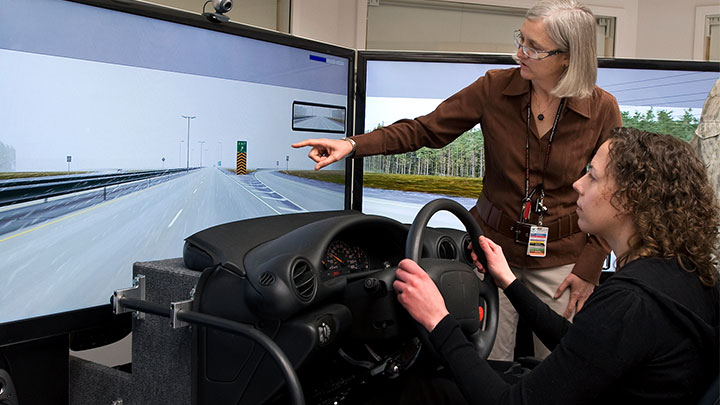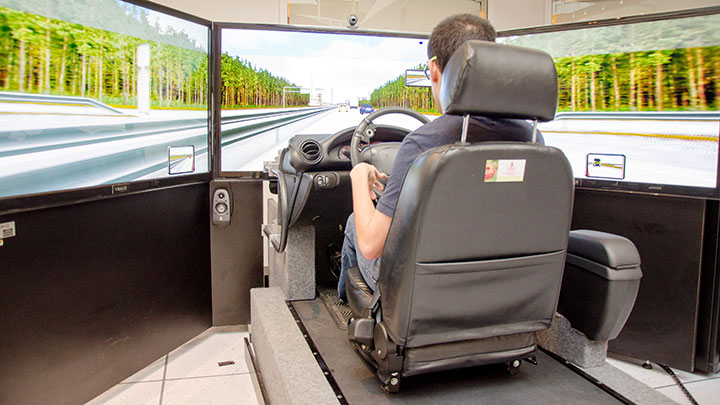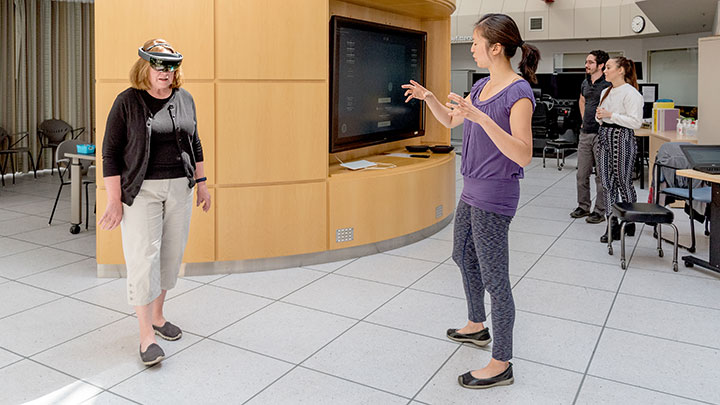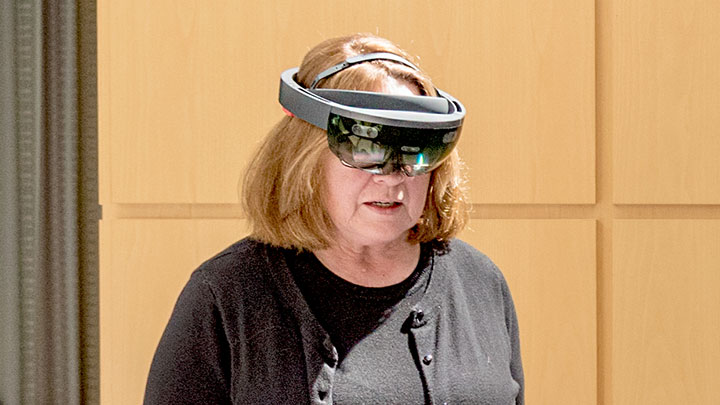
The centre houses two driving simulators. The systems consist of a series of computers, monitors, motion platform, and a replica driving compartment to fully simulate operating a vehicle. They present a variety of scenarios and environmental conditions to clients in a graduated manner and track the client’s response. Scenarios can be modified by the clinicians to better simulate real world driving conditions, such as traffic, weather and pedestrians.
In addition to visual scenes, the simulators also incorporate haptic feedback on road conditions and acceleration or deceleration of the vehicle through a system of sensors linked to the gas and brake pedals, as well as simulator-generated scenes.
The driving simulators allow therapists to assess both motor and cognitive functioning of the client. The unit enables those who require retraining to practice the skills related to driving, under the supervision of an occupational therapist, in a safe environment.


As part of a capstone project, students from the Digital Media and IT program at the Northern Alberta Institute of Technology (NAIT) created a pirate-themed virtual reality scavenger hunt game for the HoloLens. The game tests a patient’s ability to detect and recognize visual stimuli, which is helpful for those who have suffered a severe brain injury or stroke. Read Student-designed virtual reality game gets Glenrose patients moving.
While wearing a headset, a checklist of objects that the patient must locate appears on a screen. The client then walks around a room in search of playing cards with 3D images of those objects on them. In keeping with the pirate theme, objects such as a ship’s wheel, pirate flags, and treasure chest keys were created making the game fun. Once the item is found, the HoloLens scans the card, and the item is checked off the list.
Therapists traditionally have asked clients to carry out a similar exercise by using sticky notes on hospital walls, but now find it easier to track how long it takes a client to scan and recognize a particular object and those missed or incorrectly identified. Clients using the HoloLens find it more engaging and look forward to their therapy sessions.


The mini-CAREN is used for the rehabilitation of Glenrose clients presenting with both physical and psychological injuries.
The system can be used to treat a wide variety of conditions including stroke, amputation, traumatic brain injury, multiple orthopedic trauma, spinal cord injury, postural instability, sports injury, burns and psychiatric disorders such as phobias and PTSD.
The Mini-CAREN software allows users to create and modify the applications to meet individual goals of therapy as determined by the clinical staff. Applications can be scaled to provide the appropriate challenge for all levels of the rehabilitation spectrum.
The Mini-CAREN lacks the motion platform and treadmill of its big brother in the CIM Centre, but allows more clients to experience the system.